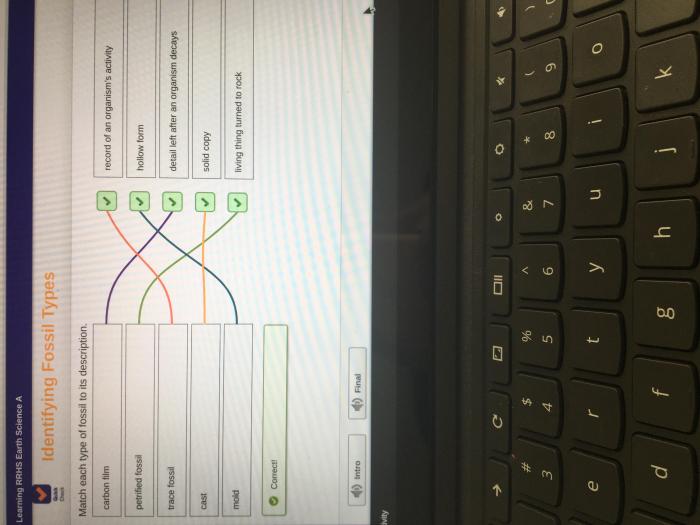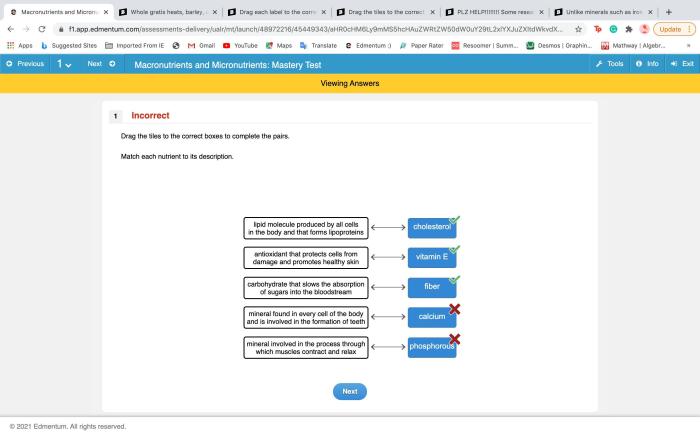Match each type of complex inheritance to its description – Delving into the intricate realm of complex inheritance, this discourse unveils the diverse patterns and mechanisms that govern the transmission of genetic traits. From the fundamental principles to the complexities of genomic imprinting, we embark on a journey to unravel the enigmatic tapestry of inheritance.
As we navigate the spectrum of complex inheritance, we will encounter the distinct characteristics of autosomal dominant, autosomal recessive, X-linked, mitochondrial, multifactorial, and genomic imprinting inheritance patterns. Each type holds unique implications for the inheritance and manifestation of genetic traits, shaping the intricate tapestry of human health and diversity.
Types of Complex Inheritance: Match Each Type Of Complex Inheritance To Its Description

Complex inheritance refers to patterns of inheritance that cannot be explained by simple Mendelian genetics. These patterns involve multiple genes and environmental factors interacting in complex ways to determine the phenotype of an individual.
Examples of complex inheritance include:
- Height
- Skin color
- Intelligence
- Susceptibility to diseases such as cancer and heart disease
Autosomal Dominant Inheritance
Autosomal dominant inheritance is a pattern of inheritance in which a single copy of a dominant allele is sufficient to produce the phenotype. Individuals who inherit one dominant allele and one recessive allele are carriers of the trait but do not express it.
Examples of autosomal dominant disorders include:
- Huntington’s disease
- Marfan syndrome
- Achondroplasia
The risk of inheritance for an autosomal dominant trait is 50% for each offspring of a carrier.
Autosomal Recessive Inheritance
Autosomal recessive inheritance is a pattern of inheritance in which two copies of a recessive allele are required to produce the phenotype. Individuals who inherit one dominant allele and one recessive allele are carriers of the trait but do not express it.
Examples of autosomal recessive disorders include:
- Cystic fibrosis
- Sickle cell anemia
- Tay-Sachs disease
The risk of inheritance for an autosomal recessive trait is 25% for each offspring of two carriers.
X-Linked Inheritance, Match each type of complex inheritance to its description
X-linked inheritance is a pattern of inheritance in which a gene is located on the X chromosome. Males have only one X chromosome, while females have two. This means that males are more likely to express X-linked recessive traits than females.
Examples of X-linked disorders include:
- Hemophilia
- Color blindness
- Duchenne muscular dystrophy
The risk of inheritance for an X-linked recessive trait is 50% for sons of carrier mothers and 0% for daughters of carrier mothers.
Questions Often Asked
What is the difference between autosomal dominant and autosomal recessive inheritance?
Autosomal dominant inheritance requires only one copy of the mutated gene to manifest the trait, while autosomal recessive inheritance requires two copies of the mutated gene for the trait to be expressed.
How is X-linked inheritance different from autosomal inheritance?
X-linked inheritance involves genes located on the X chromosome, which is present in two copies in females and one copy in males. This results in different inheritance patterns and risks for males and females.
What is the role of mitochondrial inheritance in genetic disorders?
Mitochondrial inheritance involves genes located in the mitochondria, which are organelles present in the cytoplasm of cells. Mutations in mitochondrial genes can lead to a range of disorders that are exclusively inherited from the mother.



